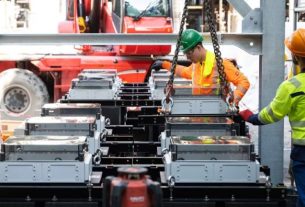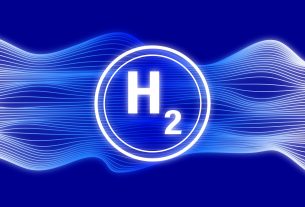Norway – SINTEF and NTNU researchers are collaborating to develop technologies and concepts that will make the oil and gas industry more energy efficient and reduce emissions from offshore production.
The research is being carried out at the LowEmission Research Centre. The goal is to contribute to a 40% reduction in greenhouse gas emissions from Norway’s oil and gas industry by 2030. The numerous gas turbines supplying the platforms with electricity is one of the topics on which the scientists are focusing.
“At present, natural gas is burnt in gas turbines to generate electricity for platform operation. This is a well-established technology with many advantages, including low investment costs. However, offshore gas turbines have a low degree of efficiency and produce 84 per cent of the greenhouse gas emissions from the Norwegian shelf. This corresponds to about 11.5 million tonnes of CO2”, says Belma Talic, a SINTEF research scientist.
As a result, there is a lot of talk about electrifying the shelf, or laying cables from onshore to provide clean hydroelectric energy to platforms. Fuel cells, on the other hand, are a potential replacement or supplement for gas turbines.
The technology has been around for decades and is currently used in hydrogen-powered cars, transportation vehicles, and spacecraft, among other applications. It’s also well-tested and works as a miniature power station, converting hydrogen and oxygen from the air to electricity, water, and heat via an electrochemical process.
Two concepts
Research scientists are now looking into the possibility of using fuel cells offshore as part of the project “Fuel cells for zero emission heat and power.” So far, two different concepts appear to be viable for use offshore.
The first is the Proton-Exchange Membrane Fuel Cell (PEMFC), which operates at low temperatures (below 100 degrees Celsius) and uses pure hydrogen as fuel. These are relatively inexpensive and are currently used in hydrogen-powered vehicles, for example.
The Solid Oxide Fuel Cell is the other fuel cell technology (SOFC). Because it takes longer to start up and shut down at temperatures above 500 °C, it is less flexible where the energy supply varies. However, this technology has the advantage of not requiring hydrogen as a fuel and can instead run on other fuels such as natural gas and ammonia.
This high-temperature fuel cell is ideal for permanent heat and energy generation installations (DHP). The degree of efficiency in such situations can reach 90%. This type of fuel cell, according to the researchers, can also be used reversibly, producing hydrogen electrolytically when a wind turbine produces excess energy.
Work on various assessments of the two technologies is ongoing at the LowEmission centre. The goal is to figure out how to create the best conditions for maximizing efficiency and longevity. The researchers are also investigating the possibility of using these fuel cells in conjunction with a gas turbine.




